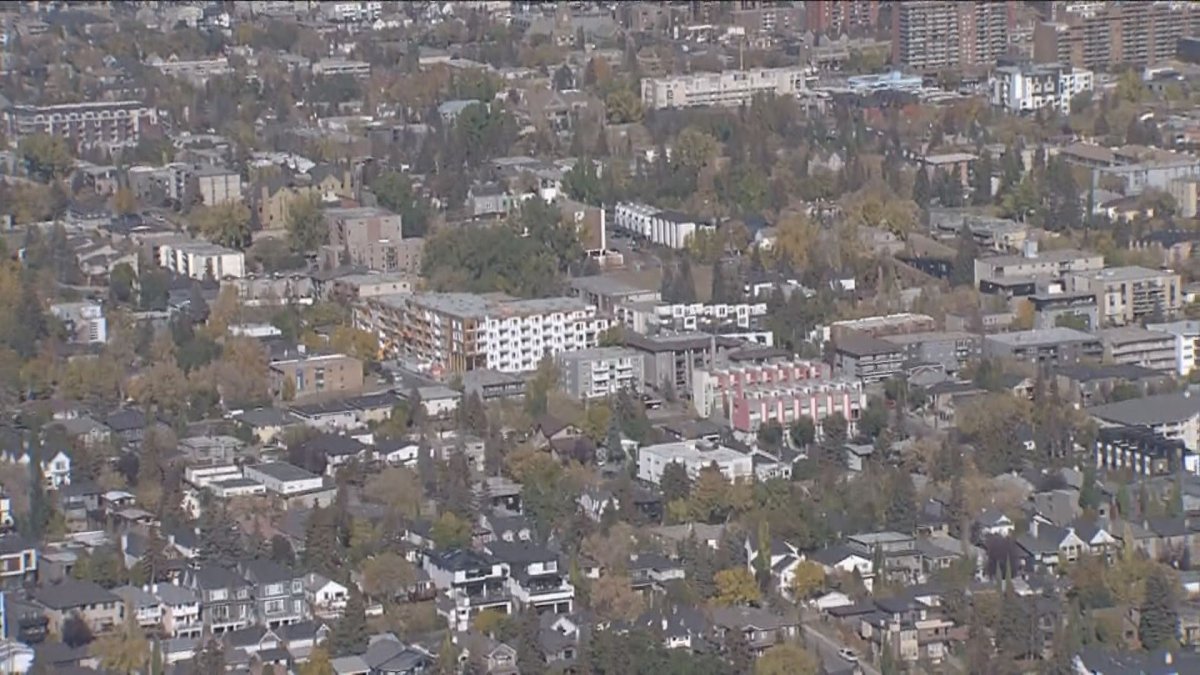After two days of hearing from the public and hours of debate, Calgary city council has approved changes to local zoning rules, including the creation of a new zoning category for higher-density developments.

Council voted 9-6 in favour of the changes with Coun. Sean Chu, Sonya Sharp, Andre Chabot, Terry Wong, Richard Pootmans and Dan McLean voting against.
The changes to the zoning rules allow for more development — otherwise known as the “missing middle.” The medium-density builds include townhomes, rowhouses, low-rise apartments and semi-detached homes.
Councillors made some minor amendments, including an increase to the minimum amount of parking stalls per unit allowed from 0.375 to 0.5.
“It’s important for folks to be able to grow and age in place. It’s important because I think the development authority should promote housing choice in our city,” Ward 3 Coun. Jasmine Mian said.
“It’s important for the sustainment of business and schools, and it’s important to the larger growth conversations we’ve been having over the past number of months.”
The marathon public hearing wrapped up late Wednesday afternoon, after a total of 73 Calgarians spoke both in support and in opposition of the proposal in front of council.
Speakers varied from residents of inner-city communities, seniors and young people looking to buy a home, as well as the development industry.

Get breaking National news
Flora Gillespie, a University Heights resident, said the zoning requirements were not “in any way” contextual to the existing homes and duplexes in the city’s existing neighbourhoods. She added she wanted to see more certainty for residents.
“The building industry may buy a lot next to private lands; my house, someone else’s house. We need to have some kind of collaboration on what’s going to go there; certainty,” Gillespie told Global News. “I need certainty and so does the building industry… that’s really all we’re asking for.”
Several concerns raised by residents included parking requirements, community character and a lack of consultation with the public.
The city administration said it had only consulted with development industry experts and not the general public on the zoning changes.
It was an issue brought up by Lisa Poole, who also spoke against the new zoning category.
“The unwillingness to work with community residents is deeply disappointing,” Poole told council. “It’s like wanting to build a new hen house but only consulting with the fox on the design. Perhaps the chickens would like some input.”
Those in favour of the zoning changes said it would allow for more housing options that would improve affordability, and wouldn’t be blanket re-zoning in established communities.
“It’s not going to be rammed down anybody’s throats… It’s just another tool,” Mike Borkristl with the Calgary Inner-City Builders Association, said.
The new zoning category called Housing – Grade Oriented, or H-GO, is allowed to be used in the city centre and inner-city neighbourhoods, with distance requirements from main streets, LRT stations and other transit infrastructure.
According to the city, 86 per cent of Calgary’s established neighbourhoods have seen a population decline since their peak. A city report cited a lack of housing options and amenities included in the factors behind the statistic.
“A part of the way I think council can address this is by offering these missing middle, gentle density… to try and entice different demographics that aren’t seeing themselves reflected in those communities currently,” Renfrew resident David Barrett told Global News.
Ward 8 Coun. Courtney Walcott said Wednesday’s debate was only about the creation of a new zoning district and added there will be opportunities in the future to debate its application.
“The guidelines tell us where they can go, but it won’t be until someone purchases the land and starts to rezone it that we can actually start to have nuanced conversations about community context and character,” Walcott said. “There will be a robust engagement process.”
Essentially, property owners will still need to bring rezoning applications to council for approval on a case-by-case basis.
City council also passed a motion from Sharp, who represents Ward 1, that calls for administration to develop a communications plan on the changes to zoning approved by council.
Her motion also asks administration to prepare a report on its practices for public engagement for a future council meeting, after council heard concerns from residents.






Comments